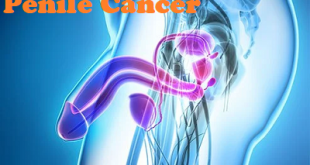Definition
Uterine Cancer, the most common cancer of the female reproductive tract, occurs when abnormal cells form in the tissues of the uterus. It starts in the uterus and spreads through the blood and lymph systems. Cancers that occur in each part of the uterus have their own names, such as cervical cancer or endometrial cancer, but are sometimes broadly defined as uterine cancer because the structure is part of the uterus.
The most common type of cancer of the uterus begins in the endometrium (lining of the uterus). The second type of cancer seen in the uterus is uterine sarcoma. This type of cancer of the uterus occurs in the muscle.
Types of Uterine Cancer
There are many different types of uterine cancer. Each type varies in the way it behaves and how it should be managed. For this reason, we often ask our specialists in pathology to review findings.
Endometrioid adenocarcinoma: This type of uterine cancer forms in the glandular cells of the uterine lining. It accounts for as much as 75 percent of all uterine cancers. Endometrioid adenocarcinoma is commonly detected early and has a high cure rate.
Serous adenocarcinoma: These tumors are more likely to spread to lymph nodes and other parts of the body. About 10 percent of uterine cancers diagnosed are of this type.
Adenosquamous carcinoma: This rare form of uterine cancer has elements of both adenocarcinoma and carcinoma of the squamous cells that line the outer surface of the uterus.
Carcinomasarcoma: This rare form of uterine cancer was previously thought to be a type of uterine sarcoma. However, it is now felt to be a uterine (endometrial) cancer. It has elements of both adenocarcinoma and sarcoma. These tumors have a high risk of spreading to the lymph nodes and other parts of the body.
Uterine cancer risk factors
Anything that increases your chance of getting uterine cancer is a risk factor. These include:
- Obesity: Being overweight raises your risk two to four times. A higher level of fat tissue increases your level of estrogen.
- Eating a diet high in fat
- Age: More than 95% of uterine cancers occur in women 40 and older.
- Tamoxifen: This breast cancer drug can cause the uterine lining to grow. If you take tamoxifen and have changes in your menstrual period or bleeding after menopause, it is important to let your doctor know.
- Estrogen replacement therapy (ERT) without progesterone if you have a uterus: Birth control pills may lower your risk.
- Personal/family history of uterine, ovarian, or colon cancer: This may be a sign of Lynch syndrome (hereditary non-polyposis colorectal cancer or HNPCC). Learn more about hereditary cancer syndromes.
- Ovarian diseases, such as polycystic ovarian syndrome (PCOS)
- Complex atypical endometrial hyperplasia: This precancerous condition may become uterine cancer if not treated. Simple hyperplasia rarely becomes cancer.
- Diabetes
- Never having been pregnant
- The number of menstrual cycles (periods): If you started having periods before 12 years old or went through menopause late, your risk of uterine cancer may be higher.
- Breast or ovarian cancer
- Pelvic radiation to treat other kinds of cancer: The main risk factor for uterine sarcoma is a history of high-dose radiation therapy in the pelvic area.
Not everyone with risk factors gets uterine cancer: However, if you have risk factors, it’s a good idea to discuss them with your doctor.
Causes of Uterine Cancer
The cause of uterine cancer is not known, but excess estrogen seems to increase the risk.
- During a woman’s reproductive years, the uterine lining, or endometrium, is in a continual cycle of growth and maturation. Estrogen encourages the growth of the endometrium, while progesterone encourages maturation.
- When pregnancy does not occur, the resulting decrease in progesterone levels causes endometrial shedding and menstruation. High estrogen levels can lead to excessive growth (hyperplasia) of the endometrium, which can develop into cancer.
- Uterine cancer occasionally runs in families, and individuals who have syndromes that increase the general risk of cancer may develop endometrial cancer.
Stages of uterine cancer
The stage provides a common way of describing cancer, enabling doctors to work together to plan the best treatments. Doctors assign the stage of endometrial cancer using the FIGO system.
Stage I: The cancer is found only in the uterus or womb, and it has not spread to other parts of the body.
- Stage IA: The cancer is found only in the endometrium or less than one-half of the myometrium.
- Stage IB: The tumor has spread to one-half or more of the myometrium.
Stage II: The tumor has spread from the uterus to the cervical stroma but not to other parts of the body.
Stage III: Cancer has spread beyond the uterus, but it is still only in the pelvic area.
- Stage IIIA: Cancer has spread to the serosa of the uterus and/or the tissue of the fallopian tubes and ovaries but not to other parts of the body.
- Stage IIIB: The tumor has spread to the vagina or next to the uterus.
- Stage IIIC1: Cancer has spread to the regional pelvic lymph nodes.
- Stage IIIC2: Cancer has spread to the para-aortic lymph nodes with or without spread to the regional pelvic lymph nodes.
Stage IV: Cancer has metastasized to the rectum, bladder, and/or distant organs.
- Stage IVA: Cancer has spread to the mucosa of the rectum or bladder.
- Stage IVB: Cancer has spread to lymph nodes in the groin area, and/or it has spread to distant organs, such as the bones or lungs.
Symptoms and Signs
If you are concerned about symptoms it is important that you see a nurse, doctor, or gynecologist (specialist doctor in women’s health). It is more likely that your symptoms are not related to cancer but it is important to have any symptoms checked.
Symptoms of uterine cancer include:
- Bleeding after you have been through menopause (once your periods have stopped for twelve months)
- Unusually heavy periods and bleeding in between your periods
- An unusual fluid or discharge from your vagina that is watery, bloody, or smelly
- Pain in your belly or abdomen
- Trouble going to the toilet to pass urine (wee) or pain when you do go.
See a doctor if you have any of these symptoms and they don’t go away and/or are unusual for you.
Complications
The only potential complication of endometrial cancer symptoms is anemia, a low red blood cell count. Symptoms of anemia include fatigue, weakness, cold hands and/or feet, irregular heartbeat, headaches, shortness of breath, pale or yellow-tinged skin, chest pain, and feeling dizzy or lightheaded.
This kind of anemia is caused by an iron deficiency in your body as a result of blood loss. Thankfully, it’s easily reversed through a diet that’s rich in vitamins and/or taking iron supplements, as well as by treating your endometrial cancer, which will stop the bleeding altogether. Speak with your oncologist before beginning any supplements.
Diagnosis and test
Your doctor will ask about your medical history and symptoms. You will also have a physical exam.
If your doctor suspects cancer, you may have more exams, including:
- A Pap test also called a pap smear, scrapes cells from the cervix for lab analysis.
- Ultrasound uses sound waves to produce pictures of the inside of the body. In a transvaginal ultrasound, the doctor inserts a device into the vagina for a better view of the uterus. Sonohysterography injects sterile saline through the cervix into the uterus. This helps provide more detail.
- A biopsy removes tissue samples from the uterus for lab analysis. A biopsy is most often the only certain way to tell if cancer is present.
- Dilation and curettage (D&C) is a procedure to remove tissue samples from the uterus. It is often done in combination with a hysteroscopy so that the doctor can view the lining of the uterus during the procedure.
If cancer is present, one or more of the following exams can find if it has spread:
- Body MRI produces detailed pictures of your uterus, lymph nodes, and other abdominal tissues. Your doctor may give you an injection of contrast material to make lymph nodes and other tissues show up more clearly. MRI is useful for disease staging and treatment planning.
- A Body CT scan produces detailed pictures of your pelvis, abdomen, or chest. Your doctor may give you an injection of contrast material to make lymph nodes and other tissues show up more clearly. CT can show cancer in the uterus, lymph nodes, lungs, and elsewhere.
- A chest x-ray produces x-ray images of the lungs.
- PET scan uses a small amount of radioactive material to help determine the extent of your cancer. PET scans can be superimposed with CT or MRI images to produce special views. These views can lead to more precise diagnoses.
Treatment
Uterine cancer is treated by one or a combination of treatments such as laparoscopic surgery, radiation therapy, chemotherapy, and hormone therapy. 10-15% of patients may need adjuvant radiotherapy, and or radiotherapy with chemotherapy depends on tumor risk factors.
Surgery: It is the procedure in which the tumor and surrounding tissue are removed during an operation.
Common surgery procedures include:
- Hysterectomy: In this procedure uterus and cervix are removed with the help of laparoscopy. The surgeon may perform a simple hysterectomy or a radical hysterectomy, and for patients who have been through menopause, the surgeon will also perform a bilateral salpingo-oophorectomy in which both fallopian tubes and ovaries are removed.
- Lymphadenectomy: In this procedure lymph nodes near the tumor are removed.
Radiation Therapy: The use of x-rays to kill or injure cancer cells, is commonly used as an additional treatment to reduce the chance of cancer coming back. It may be recommended as the main treatment if you are not well enough for surgery. Radiation therapy is given either externally, where a machine directs radiation at cancer and surrounding tissue; or from inside the body (brachytherapy), where radioactive material is put in thin tubes and placed near cancer internally.
Radiation therapy to the pelvic region may cause menopause, therefore, if you are concerned about how the treatment will affect your fertility, it is important to raise your concerns with your treatment team before treatment commences.
Chemotherapy: Chemotherapy is used to treat certain types of uterine cancer, or when cancer comes back after surgery or radiotherapy, or if the cancer is not responding to hormone treatment. It can be used to control cancer and to relieve symptoms. It is usually given as a drug that is injected into a vein (intravenously). The doctor will explain the chemotherapy treatment course and how long it will last.
Hormone Therapy: It is usually given if cancer has spread or if cancer has come back (recurred). It is also sometimes used if surgery is not an option. Progesterone is the main hormone treatment for women with uterine cancer, and it is available in tablet form or by injection by a GP or nurse. It helps shrink some cancers and to control symptoms.
More than 80% of cases of endometrial cancer are cured by surgery alone. The doctor will advise you to stay at the hospital for 3-5 days depending on your health.
Prevention of Uterine Cancer
There is no sure way to prevent uterine cancer. General prevention strategies involve lowering risk factors under your control. This includes things like:
- Eating a healthy diet
- Maintaining a healthy weight
- Treating other medical conditions, such as diabetes
- Not smoking
- Speaking with your doctor about your risk before beginning hormone replacement therapy (HRT) for menopause or other conditions
- Attending regular physical examinations and OBGYN appointments
Other factors that can decrease your risk include:
- Pregnancy
- Birth control pill use
- IUD (intrauterine device) use
 Diseases Treatments Dictionary This is complete solution to read all diseases treatments Which covers Prevention, Causes, Symptoms, Medical Terms, Drugs, Prescription, Natural Remedies with cures and Treatments. Most of the common diseases were listed in names, split with categories.
Diseases Treatments Dictionary This is complete solution to read all diseases treatments Which covers Prevention, Causes, Symptoms, Medical Terms, Drugs, Prescription, Natural Remedies with cures and Treatments. Most of the common diseases were listed in names, split with categories.







